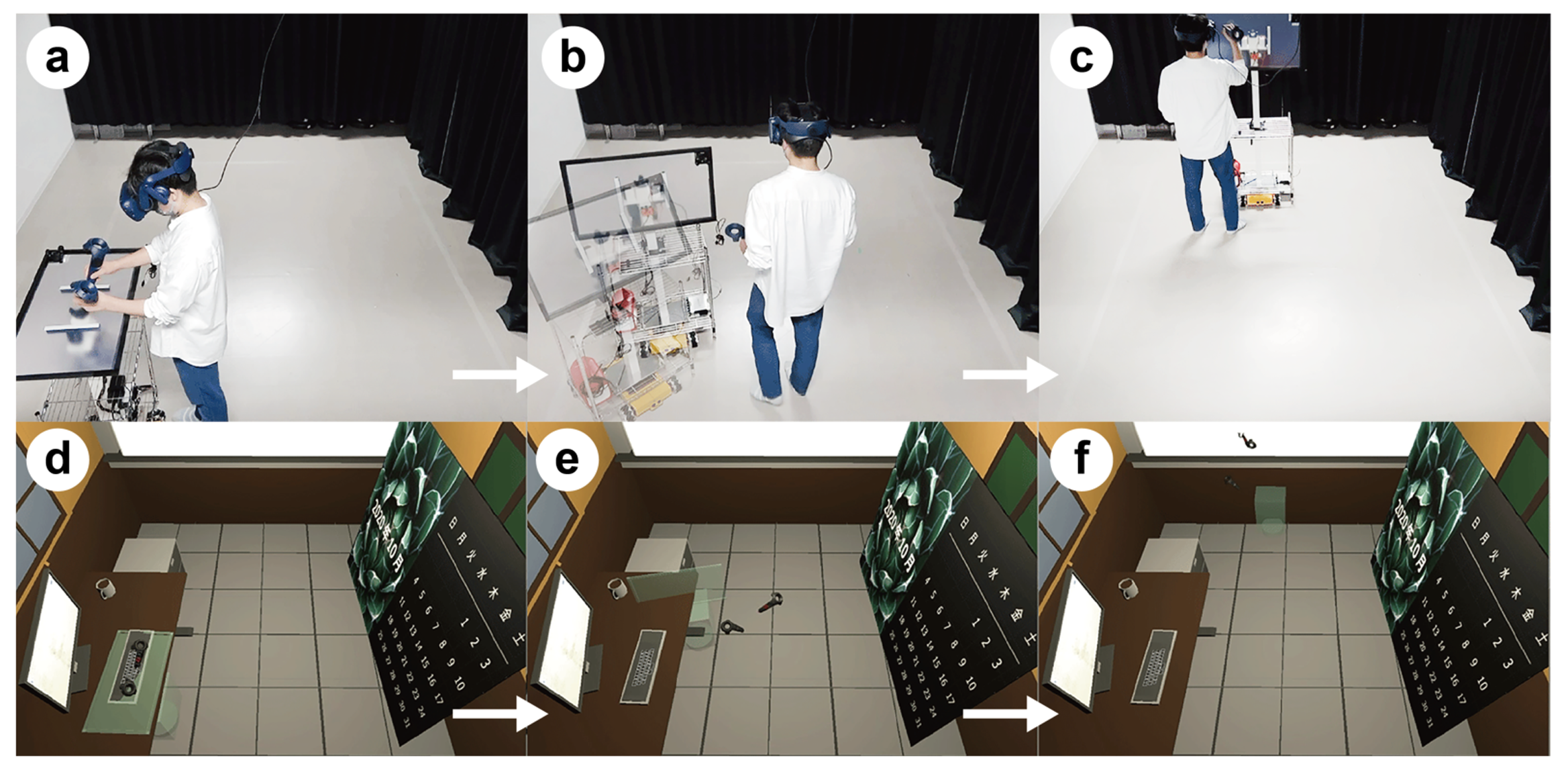Room-scale VR has been considered an alternative to physical office workspaces. For office activities, users frequently require planar input methods, such as typing or handwriting, to quickly record annotations to virtual content. However, current off-the-shelf VR HMD setups rely on mid-air interactions, which can cause arm fatigue and decrease input accuracy. To address this issue, we propose UbiSurface, a robotic touch surface that can automatically reposition itself to physically present a virtual planar input surface (VR whiteboard, VR canvas, etc.) to users and to permit them to achieve accurate and fatigue-less input while walking around a virtual room. We design and implement a prototype of UbiSurface that can dynamically change a canvas-sized touch surface's position, height, and pitch and yaw angles to adapt to virtual surfaces spatially arranged at various locations and angles around a virtual room. We then conduct studies to validate its technical performance and examine how UbiSurface facilitates the user's primary mid-air planar interactions, such as painting and writing in a room-scale VR setup. Our results indicate that this system reduces arm fatigue and increases input accuracy, especially for writing tasks. We then discuss the potential benefits and challenges of robotic touch devices for future room-scale VR setups.
This work was published in the Proceedings of the ACM on Human-Computer Interaction and presented orally at the ACM Interactive Surfaces and Spaces Conference (ISS) 2023.
テーマ
A Robotic Touch Surface for Supporting Mid-air Planar Interactions in Room-Scale VR
主な研究成果・対外発表
- Ryota Gomi, Kazuki Takashima, Yuki Onishi, Kazuyuki Fujita, and Yoshifumi Kitamura. UbiSurface: A Robotic Touch Surface for Supporting Mid-air Planar Interactions in Room-Scale VR, Proceedings of the ACM on Human-Computer Interaction, Volume 7, Issue ISS, Article No.: 443, pp. 376–397, 2023
- Demo video
Results in Japanese are described in Japanese.


